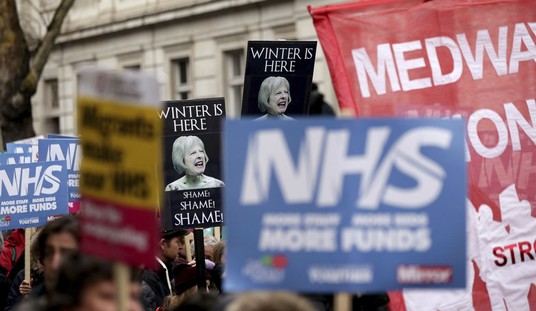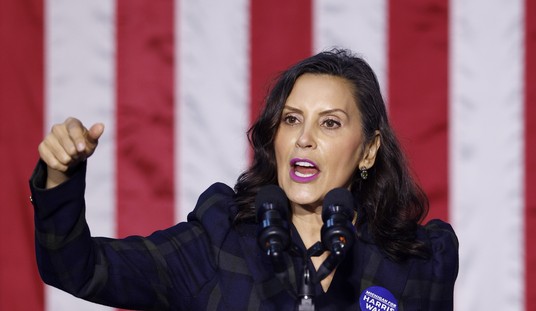Yes, that’s sixteen trillion dollars in “emergency” loans to financial institutions from the beginning of the recession in December 2007 to just one year ago. The long-awaited GAO audit shows that the Federal Reserve loaned more than the worth of the annual US economy, and not just to American banks, although US institutions got the lion’s share. Citibank was the largest beneficiary:
Of the $16.1 trillion loaned out, $3.08 trillion went to financial institutions in the U.K., Germany, Switzerland, France and Belgium, the Government Accountability Office’s (GAO) analysis shows.
Additionally, asset swap arrangements were opened with banks in the U.K., Canada, Brazil, Japan, South Korea, Norway, Mexico, Singapore and Switzerland. Twelve of those arrangements are still ongoing, having been extended through August 2012.
Out of all borrowers, Citigroup received the most financial assistance from the Fed, at $2.5 trillion. Morgan Stanley came in second with $2.04 trillion, followed by Merill Lynch at $1.9 trillion and Bank of America at $1.3 trillion.
And there is a pattern to the disbursements, too:
The audit also found that the Fed mostly outsourced its lending operations to the very financial institutions which sparked the crisis to begin with, and that they delegated contracts largely on a no-bid basis. The GAO report recommends new policies that would eliminate such conflicts of interest, and suggests that in the future the Fed should keep better records of their emergency decision-making process.
The Fed doesn’t have a requirement to comply with the GAO’s recommendations, but its political position and independence are not exactly secure at the moment. Congress ordered the audit based on building political pressure to make the Fed more transparent, and the apparent conflicts of interest found by the GAO will only increase that pressure. First up, but probably not last, is Senator Bernie Sanders:
The non-partisan, investigative arm of Congress also determined that the Fed lacks a comprehensive system to deal with conflicts of interest, despite the serious potential for abuse. In fact, according to the report, the Fed provided conflict of interest waivers to employees and private contractors so they could keep investments in the same financial institutions and corporations that were given emergency loans.
For example, the CEO of JP Morgan Chase served on the New York Fed’s board of directors at the same time that his bank received more than $390 billion in financial assistance from the Fed. Moreover, JP Morgan Chase served as one of the clearing banks for the Fed’s emergency lending programs.
In another disturbing finding, the GAO said that on Sept. 19, 2008, William Dudley, who is now the New York Fed president, was granted a waiver to let him keep investments in AIG and General Electric at the same time AIG and GE were given bailout funds. One reason the Fed did not make Dudley sell his holdings, according to the audit, was that it might have created the appearance of a conflict of interest.
To Sanders, the conclusion is simple. “No one who works for a firm receiving direct financial assistance from the Fed should be allowed to sit on the Fed’s board of directors or be employed by the Fed,” he said.
The investigation also revealed that the Fed outsourced most of its emergency lending programs to private contractors, many of which also were recipients of extremely low-interest and then-secret loans.
The Fed outsourced virtually all of the operations of their emergency lending programs to private contractors like JP Morgan Chase, Morgan Stanley, and Wells Fargo. The same firms also received trillions of dollars in Fed loans at near-zero interest rates. Altogether some two-thirds of the contracts that the Fed awarded to manage its emergency lending programs were no-bid contracts. Morgan Stanley was given the largest no-bid contract worth $108.4 million to help manage the Fed bailout of AIG.
Sanders calls the report an exposé of “socialism for the rich and rugged, you’re-on-your-own individualism for everyone else.” Of course, Sanders is a proponent of socialism for everyone, but put that aside for a moment. The report shows not so much that the Fed chose crony capitalism over clean hands, but that they didn’t have a lot of choice in the matter. By the time the crisis hit, the financial markets had narrowed to such a point that the only entities that could handle the work needed by the Fed were the same ones needing the bailouts. It’s a predictable consequence of the too-big-to-fail approach and a lax attitude towards industry consolidation.
Actually, as the Washington Independent reports, the audit didn’t really contain that many red flags for the Fed, other than the massive amounts of cash it loaned:
The report concluded $16 trillion in emergency funds were issued to financial institutions worldwide, and that some $660 million were paid to a handful of banks to administer the emergency loans. Most of the contracts associated with the latter sum were not issued through a bid, primarily due to “exigent circumstances,” the report explains.
While the contracts were consistent with acquisition policies governing the Federal Reserve Bank of New York, the most active of the Federal Banks during the financial crisis, the authors of the report write, “policies could be improved by providing additional guidance on the use of competition exceptions, such as seeking as much competition as practicable and limiting the duration of noncompetitive contracts to the exigency period.”
Given the lack of competition available, the GAO recommendation may be more academic than useful.
For those interested in the fate of the mortgage-backed securities that created all of the financial instability when housing prices dropped, there is some good news:
On November 25, 2008, the FOMC announced that FRBNY would purchase up to $500 billion of agency mortgage-backed securities to support the housing market and the broader economy.56 The FOMC authorized the Agency MBS program under its authority to direct open market operations under section 14 of Federal Reserve Act. By purchasing MBS securities with longer maturities, the Agency MBS program was intended to lower long-term interest rates and to improve conditions in mortgage and other financial markets. The Agency MBS program commenced purchases on January 5, 2009, a little more than a month after the initial announcement. FRBNY staff noted that a key operational challenge for the program was its size. As discussed later in this report, FRBNY hired external investment managers to provide execution support and advisory services needed to help execute purchases on such a large scale. In March 2009, the FOMC increased the total amount of planned purchases from $500 billion to up to $1.25 trillion. The program executed its final purchases in March 2010 and settlement was completed in August 2010.
“Agency MBS” refers to those securities issued by Fannie Mae and Freddie Mac, and/or guaranteed by Ginnie Mae, the government-sponsored entities at the root of the housing bubble. According to the audit, the Fed has drawn at least a significant portion of the poison out of the economy, and their ownership should make it easier for foreclosure negotiations to proceed. The fact that foreclosures have proceeded apace despite the consolidation shows that the problem is no longer having clear title to the lien but the ability of current homeowners to sustain their investments.
It’s an interesting report overall, one that doesn’t paint the Fed in an entirely bad light. It will, however, be a good argument for further audits in the future.








Join the conversation as a VIP Member